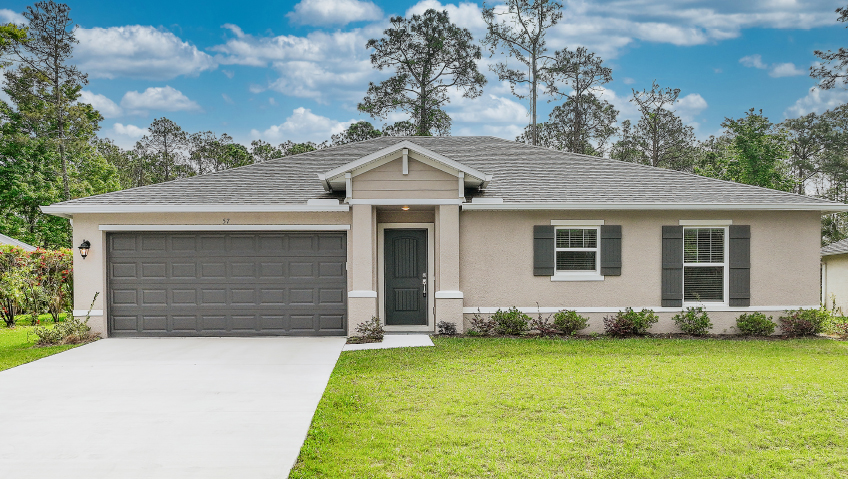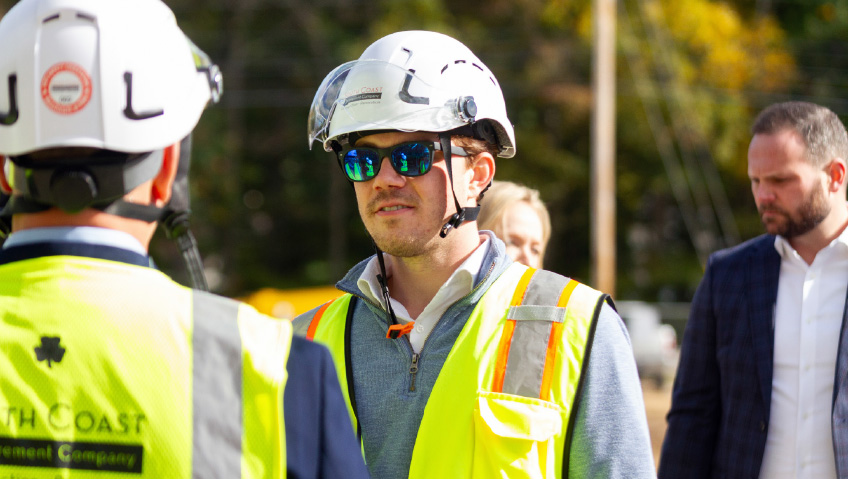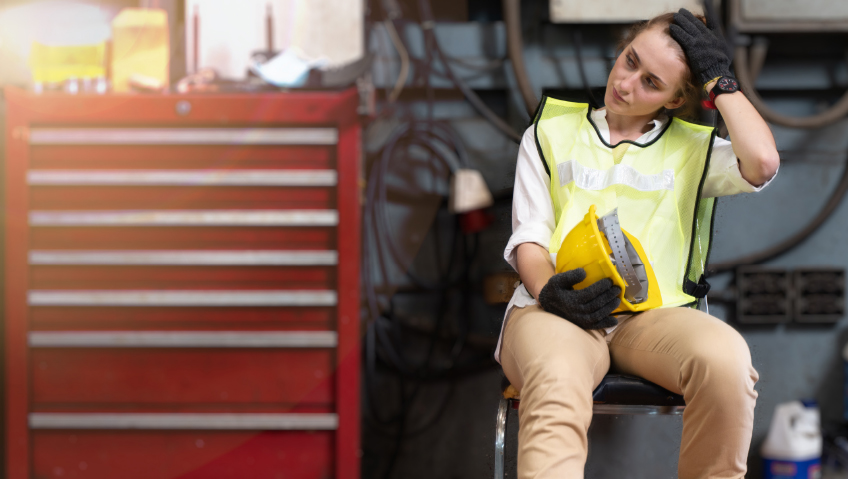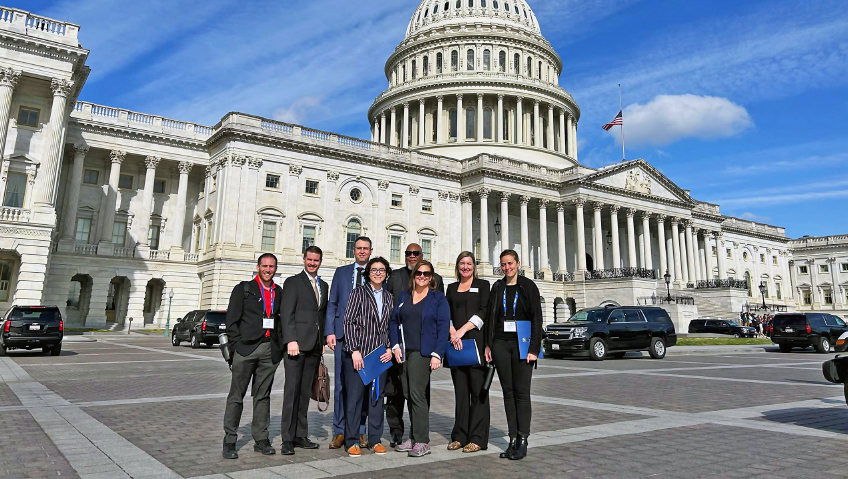Founded by President Mark Rosenwasser and Executive Vice President Rainer Richter in 2019, Florida-based INB Homes offers a special version of affordable luxury in markets across the state. The company demonstrates that it is possible to keep homes affordable while exhibiting superior quality.
With a background in multi-family apartments, Rosenwasser initially focused mainly on Class C value-add properties, renovating them after purchasing. When that became a less attractive option, he looked to explore something new, resulting in single-family homes for rent, a new asset class. However, upon speaking to several builders, some of the larger ones were not interested in doing a site deal, while the smaller ones were unclear whether they’d have the scope or capacity to do it.
“We have a very strong focus on our market, which is what we call today in politics the Forgotten Middle,” says Rosenwasser. “In government there’s a focus on affordable housing and having places to live, but what about the middle class, which is what America is really driven by and what makes this great nation unique?”
A lot of INB buyers are teachers, firefighters, police, and engineers, he adds, so while the company strives to make its homes affordable, it also ensures certain finishes raise the bar with more modern styling.
“I was consulting to one of the builders [Mark] talked to, and that’s how we met. Then we thought we’d do it the hard way and start our own home-building company, contracting from a general contractor or a homebuilder. So that’s what we did,” says Richter.
The company started off in a “more-or-less abandoned” call center with just two people discussing business planning and growth strategies before adding a part-time accountant and someone who could build, purchase, and permit.
“We started with a relatively small team, then once we got off the ground, we hired a builder, field managers, superintendent, and grew from there,” says Richter.
Growing from a tiny company to a larger one created some challenges, he adds. “Initially you need all generalists because everybody has to do a little bit of everything. Then as you expand, you can start to specialize and now you have somebody who just does permitting or purchasing or construction management or construction administration.” On top of that, there was COVID to deal with, which exacerbated the typical challenges of developing a startup.
“We really wanted to do a built-for-rent company,” explains Richter. “We designed our product with a focus on that, where everything had resilient hard surfaces, flooring, and countertops—nicer features than just bottom of the barrel. No carpet, no laminate countertops, no one-piece PVC.” These choices benefit both future resale value and the tenants living in the home.
Before going to market with a built-for-rent model, Richter suggested selling a few units to make sure they were a good product. “If you build something and basically sell it to yourself, you can always pretend it’s great, but maybe it isn’t,” he says. “Instead, we put them on the market, and it was very successful.”
Realizing the company was meeting with more success than anticipated, the duo decided to continue on this path and for the first six months, sold homes instead of putting them into the rental pool, recycling the money, and enjoying “pretty nice” margins.
“Then we decided that’s really not what we’re all about. We really wanted to do built-for-rent, and we switched back to the original plans of building up a rental pool of single-family homes,” Richter says. “But as the product seemed to have a good acceptance, we brought in a second investor who’s interested more in built-for-sale, not built-for-rent.”
Beginning in 2020, the company morphed into dual-track built-for-rent and built-for-sale, showing impressive growth from a very modest 20 to 30 homes in the first year or two in the “scattered lot” markets in Palm Coast and Palm Bay, to 150 units last year.
2020 also saw the introduction of the company’s more traditional subdivision business—where Richter’s background in home building shines—in addition to the scattered lot areas in Palm Bay and Palm Coast.
“This is a new-ish area for us. To some degree, when those opportunities came down the pipeline and were ready to build and go active, the built-for-rent market had slowed down very significantly,” Richter says. “As of early 2023, new projects have been extremely challenging, between high cap rates, project finance, construction, and rent. As cost went up, cap rates went up, construction costs went up, and it became more and more difficult.”
While building permits are generally a lengthy process, Florida has also always been more challenging due to numerous regulations and environmental concerns. Municipalities tend to be understaffed and there’s always the “wild card” of a municipality changing its mind and turning down a project after a company has done everything they’ve been told to do, Richter explains.
But INB has continued to find success. Its first project at Bimini Bay was intended to be built-for-rent but ended up selling to a homebuilder for a solid profit that was put back into the company for growth. At this point, the company owns two subdivisions in the Orlando area, with 151 units and 250 units.
Perfecting the building of a home in a short period of time is a challenge, of course, but one the company has continually invested in and is proud of.
As a newer and fast-growing company, other challenges include breaking into an industry and trying to disrupt it. “Obviously, the pandemic was probably the most difficult time to build, and then there were high interest rates,” Rosenwasser says. “We’re really appreciative of being a builder able to not only survive during that time, but really thrive and see our team coming together.” Indeed, what began as 19 homes in the company’s first year now stands at 500.
In terms of product design, the company’s offerings were initially designed as built-for-rent and planned as efficiently as possible, with smaller floor plans of 1,500 square feet and no wasted space. “We try to minimize wasted space as much as possible to save money and still offer a very livable three-bedroom in the smallest possible footprint,” Richter says. “Some of the money we save there can be put into nicer finishes, like quartz or granite countertops and luxury vinyl plank flooring. Showers are not one-piece PVC; they’re tile to the ceiling. We use nice light fixtures, and our faucets are a level above the builder grade that you might see in some of our competitors.”
The philosophy behind this approach is practical: even rentals eventually are sold, perhaps several years down the road, at which point slightly nicer features will make a big impact. “Even though they’re entry-level price points, they are homes that I think most people would look at and say: ‘that’s a really nice house,’” Richter says. “They can live in this house without spending anything other than maintenance for the next few years.”
Costs are also kept low by keeping it simple. “A lot of small builders will develop tens of different products for different communities, but we’re really focused on keeping our model count low in order to keep that cost down and deliver the most bang for the buck,” Rosenwasser explains. This means three models maximum that all look different and all feel different, but ultimately, when looking at the bones and the core of the home, it’s really three core floor layouts.
INB Homes is also looking to widen its subdivision offerings in the coming years, with a new single-family home 74-unit subdivision community slated to begin construction in Q4 of this year or Q1 of next year. “It will be a really beautiful community, still affordable luxury,” says Rosenwasser.
“The growth is going to come from the subdivisions, and right now we have a strong focus on Central Florida,” says Richter. “That’s the whole Orlando area and then the East Coast, with moving over to Tampa Bay the next logical step.”
While high mortgage interest rates make it difficult for potential homebuyers, Central Florida is still a very vibrant market where land acquisition is extremely competitive. “We’re unique in the fact that we focus very much on good acquisition,” Rosenwasser adds. “We’re very bullish on buying and building. We have a 1,000-unit pipeline because we’re very focused on the future.”
INB knows when the market turns and when interest rates start going down or stabilize and is ready to jump. “Getting good land positions is key,” Rosenwasser shares. “Every good project will have lots of homebuilders going after it, so being a private builder is an advantage because we can close on a property at preliminary site plan (PSP) approval, which most public builders can’t or won’t do.”
If a seller has a piece of land and says they want to see money within the year, chances are there won’t be final development to the point where you can start “moving dirt” and putting infrastructure in, he says, which is where almost all public builders want to be before they close.
“We can close at PSP when it’s entitled but not engineered yet. That typically saves anywhere between six months and a year,” says Richter. “If you have a seller that wants to see money a little bit earlier, we can close with a PSP—albeit at a lower price, but it’s attractive for many sellers. So that is an advantage that we have.”
While similar private companies could do what INB is doing, many of those smaller companies don’t have the acquisition, entitlement, and engineering expertise, meaning they avoid the subdivision segment unless they can buy finished lots. “We have that [expertise] in-house, so we can go through the process from an unentitled piece of dirt to a developed lot,” Richter says. “It’s an expertise you have to build up, and many of the smaller outfits don’t have that; they just build houses.”
And the entire INB team is on board with the company vision. “We treat employees like family and partners. Everybody really feels like a partner in this, and our goal is to keep that going even as we grow,” Rosenwasser says. “Sometimes as you grow that can dissipate a little bit, but we’re really trying to push that very, very hard. Because we really feel that way,” he says.
“Ultimately, we’re really looking ahead and investing in our future,” says Rosenwasser. “We’re working to get our hands on the lots that we need to really build out those communities that we want and get to that size that we want to be.”






